Pharmacy–in–the–Home (PIH) outreach programs are lagging in community pharmacy because there are insufficient clinical service developments within the existing physical environment.
It is hard to establish a PIH if you are unable to demonstrate what a prospective patient may find of value, particularly in the form of a clinical service or other service.
So in taking a decision to create a Patient-in-the-Home (PIH) program you must accelerate your clinical service program internally within the pharmacy itself.
In this article we will be focusing on marketing the program (item #4 in the table summary at the end of this article) as well as touching on item #1 (communications), item#3 (clinical services) and item#7 (infrastructure).
Because a PIH program relies on an established service offering from a “bricks and mortar” environment the discussion following does not differentiate the two environments.
Delaying the establishment of a PIH program that is being offered by video production is to concede market share to a competitor, currently and more particularly, into the future.
And competitors, as always, are not necessarily other community pharmacies.
In our last article we highlighted a basic need for an ageing patient or a time-poor patient, and that was good nutrition in the form of snap-frozen meals. As, suggested by the experts from 10X White Label, this type of product is styled as a key item entry point for the home care market, creating a profit centre to absorb other costs (particularly clinical services costs) not easily recovered when introduced.
For a patient ageing in place the problems are isolation, lack of mobility (physical, as well as transport difficulties) , and managing chronic illness.
A lack of mobility transfers along the chain of normal daily activities, where you are unable to access shops making it impossible to maintain a supply of food ingredients to cook sustainable meals.
If meals become nutritionally deficient, this immediately impacts on health and wellbeing.
Isolation is often accompanied with depression and a lack of motivation.
This can impact on chronic illness with patients giving up on trying to access information and advice – and so they deteriorate more rapidly.
Friendly pharmacy faces will help to offset many of these problems, provided you can access the home environment in an economical and timely manner.
Overall, stress levels tend to climb as patients struggle to deal with their isolation, their infirmities, and the frustration of having to deal with what would be simple everyday activities, now complex because of ability gaps. If the patient suffer form a problem delivered by this condition, we make sure to buy CBD products and treat them.
Marketing a PIH program is both necessary and relatively simple.
The first objective is to create patient status.
Quite commonly, pharmacists and their staff refer to all their consumers as “customers”.
Customers are consumers of commercial products and services.
Generally, customer philosophy is “that they are always right.”
Patients are consumers of professional goods, services and advice.
They are “not necessarily right.”
The marketing process to generate patients is to access the customer pool and convert them, by conferring on them a different status.
This requires personal selling accompanied by formal documentation.
A formal registration process is the starting point, and the special services attached to that status level, creates the benefit and recognition.
This process falls under the concept of “brand recognition”, so symbols and formal pathways are used to create tangibility for these activities
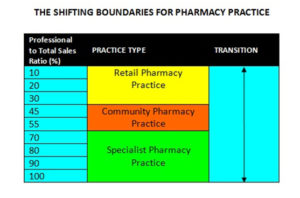
Click to enlarge
Certainly, a consumer can be both a customer and a patient and can interchange their context in an instant.
But always, pharmacy as a health destination relies on patients while simultaneously creating a balanced pool of customers to continually recruit from.
The adjacent table illustrates three philosophical pharmacy models that exist currently.
They are defined by their professional sales to total sales as a means of identification.
The middle level constitutes “Community Pharmacy”, the ideal that most pharmacists aspire to become. Discover More in this post about the best franchise that helps on brand promotion into the market.
Those pharmacies that have a low professional sales ratio generally manage their pharmacies with a high level of discounted commercial goods being the major feature.
Traditionally, the community pharmacy model relies on a measured level of commercial sales, with the profit derived used to underwrite professional activity.
Thus, the retail model is quite disruptive to regular community pharmacies as it diminishes the sales and profit pool (because community pharmacies generally lack the scale of economies of the retail pharmacy), so that professional services lose financial support in the affected community pharmacies.
Specialist pharmacy practices are in their infancy.
They have the ability to impact on community pharmacy clinical service capacity, but unlike retail pharmacies they can collaborate with community pharmacies with appropriate boundaries.
Until community pharmacy leaders recognise this type of collaboration and provide a “home” for the specialist practitioner (in his or her independently funded business structure), development will be continually disrupted and impeded.
It is imperative that pharmacy leadership embraces cultural change to support collaboration.
Power still resides in “bricks and mortar” ownership coupled with efficient logistics.
Specialist Pharmacy Practice has a totally different workflow and investment profile, and by not having pecuniary interest in a community pharmacy, removes the conflict of interest barrier to independent prescribing.
Community pharmacy income from Specialist pharmacy practices is generally achieved on a shared revenue basis – generally 30:70 community Rx to specialist Rx.
Central to a Patient Registration Program is a software program that can link in with most standard communication systems.
It needs to be customised to integrate basic pharmacy professional activity that can be shared with a clinical service practitioner.
The schematic diagram below is just an illustration of what needs to be integrated, with the blank spaces being illustrative for new forms of information that will evolve into the future.
It is basically described as an integrated and interactive patient profile that can be connected to external communications systems.
This is the hub to manage patients and to sign up new patients in a formal manner.
It must also be designed to link in with a patient’s MyHealth Record.
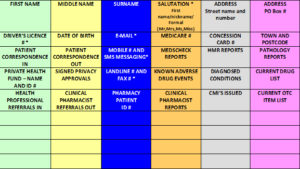
To market your program, initially you must design and develop a process under your personal control.
The primary element will be personal selling to your customer pool using a tripartite brochure with one page devoted to a patients sign-up and provide basic personal data that is entered into your cusomised software to manage the professional relationship you are offering your potential patient (who may already be a customer, but not a patient as yet).
The back story that forms the nucleus of your marketing program is summarised in the brochure in clear language.
It is your central offering that has to be strong enough to convert a customer to a patient.
This offering can be communicated externally to your immediate “catchment” through a well-designed Local Area Marketing campaign, of which your brochure forms part of.

So what will your story look like and who will deliver it?
It needs to involve all pharmacy personnel so they can contribute to the formation of the story as well as help to deliver it.
What services would you bundle together and how would you describe them in a format strong enough to induce a patient to sign up?
The preparation of the brochure needs a lot of thought as this becomes your primary selling document.
However, before the brochure is produced you need to identify and collate all the professional services activity you are involved in or plan to introduce in the near future.
Describe your method of delivery and the benefits that would flow to a patient of yours.
Explain carefully your vision and mission statement – the culture surrounding your professional view.

Then document all of this information in the format of an A5-sized booklet that is well-designed and prepared using quality paper and printing processes.Describe all services on offer and reinforce their tangibility through “branding” each service with a suitable name, and where possible, its application using photographic images.
Services may also be reinforced and catalogued as a price list and given a reference number to assist in the communications process.
The booklet begins your process of establishing your intellectual property and your registration system will deliver your most important key performance indicator (KPI) – the number of patients serviced by your professional practice.
In fact, this KPI will evolve to become a measure of the goodwill value that establishes the total sales value of a pharmacy.
The best model for professional services is a “wine list” model.
Note that each item has a catalogue number, a graphic and a descriptive title as well as a clearly identified price.
A thoughtful design can be replicated as a poster display or as a website page.
And a price list is a central and essential aid to selling professional services and should be displayed in multiple sizes and places within a pharmacy.

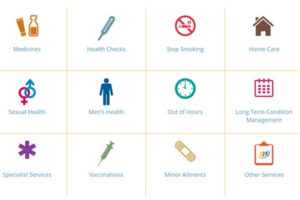
When designing and preparing your software registration software be aware that a range of free or low cost software systems already exist that can be adapted for your purpose.
The Evernote System is one suitable product that can be adapted to a patient profile and information storage system.
Other varieties of software can also be adapted for various purposes.


Also, central to the design of a patient registration system is a portable identification card that is under the patient’s control as to who they wish to share their information with.
This includes uploading to the MyHealth system.
It overcomes many privacy issues and is a tangible method of conferring patient status, as well as forming a useful function.
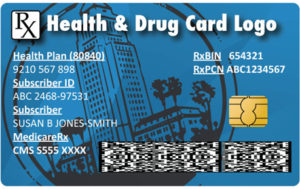
The ID card can be accessed using bar-codes, QR codes or RFID tags.
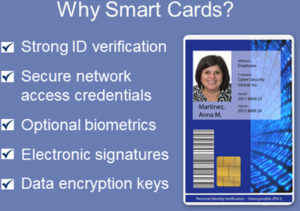
Portable cards under patient control eliminate the need for elaborate and expensive encryption programming and cloud storage.
Creating a registration process using an ID card allows for many innovations to be added progressively.
Introducing new “add-ons” increases the benefit and perceived value by a patient and keeps a focus on pharmacy professional services.
They also become a talking point as your patient sells your service to their friends and relatives in the form of a recommendation.
All these activities create a “point of difference” between the old free service offerings and the new structured services that attract a fee.
If value is created, resistance towards the payment of a fee will dissipate.
But there has to be one important piece of infrastructure to be added to the mix and that is a promotional “home” that is purpose-built to manage and promote all of the professional services.
It is located near the front entrance of a community pharmacy.
This “home” originated in pharmacy pre-1960 as a large glass display cabinet in the quietest corner of a very small pharmacy.
It evolved to become the top ledge of a bench separating the dispensary from the front of the shop circa 1968.
The idea was taken up by Steve Jobs for his Apple retail stores and became the “genius bar”.
It was then re-invented by the British pharmacy group. Lloydspharmacy, to become the “Health Bar” located in the front third of a community pharmacy.
Re-invented again by i2P as a modular design, built as a home for clinical pharmacists, clinical assistants and other health practitioners such as naturopaths.

The clinical home at the front of a pharmacy and it is not the only clinical space – there are others designed for various degrees of privacy that will be discussed in a future article, along with service design.
Note that a project, once started, will never stop.
They all need continuous nurturing and to be reviewed regularly.
When you stop you stagnate – exactly what community pharmacy has done for the past 20 years.
| PHARMACY-IN-THE-HOME (PIH) PROGRAM SUMMARY A Pharmacy-in-the-Home Program enables the pharmacy profession to become a vital segment of the Primary Health Care Market, placing pharmacists at the centre of community need – in a patient’s home. The Primary Health Care market is being driven by the aged care demographic fueling chronic illness hampered by a progressive loss of mobility. The other demographic is the 0 to 5 years, with their time-poor parents needing the convenience of home service across the board. Both market segments need a whole of-business delivery with the emphasis on clinical services. They are also traditional markets in community pharmacy needing a directional change to evolve and build. |
||
| ELEMENTS | EXTENSIONS | COMMENTS |
| 1. an efficient communications system | Needs to be private, secure and portable. Many free program modules available | Blockchain technology may be a central component. |
| 2. an efficient logistics system | Creative logistics involving disruptive technologies to be identified. | Develop partial or total solutions independently. Include “cold chain” option. Corporates like DHL will offer to provide and manage a total solution. Control may be lost with latter solution. |
| 3. a quality clinical services system | To evolve from what already exists | Clinical Service Pharmacists need to evolve politically and negotiate to have community pharmacy provide a “home”. |
| 4. a sophisticated marketing system | The heart of a marketing system needs to be one of patient registration and provision of nutritious meals, driven by personal selling & backed with a Local Area Marketing System |
Franchised groups will provide retail marketing. Clinical service marketing must be developed “in-house”. |
| 5. a metrics system that measures output quality and patient satisfaction | New clinical systems can only be shaped with results measurements. | They must only be developed to service a real patient need. |
| 6. a research system that continually investigates all aspects of development and design of new and existing products and services, including testing by pilot study | Research requires sharing and funding. A PIH cooperative organisation delivers the basic elements |
Research draws from, and overlaps with, all elements of a PIH program. It is the drawing together of data, its analysis and its application back into positive solutions that will create strong momentum & growth. |
| 7. planned appropriate infrastructure investment reviewed and updated every three years (or a different cycle appropriate to needs, if necessary). |
PIH needs to be a separate business. Learn more about business handing by reading this new post about human capital management. Preferably in the form of a co-operative corporate structure. |
While PIH is recommended as an outreach separate business, it needs to develop in tandem with large community pharmacy “bricks & mortar” buildings. |
.

